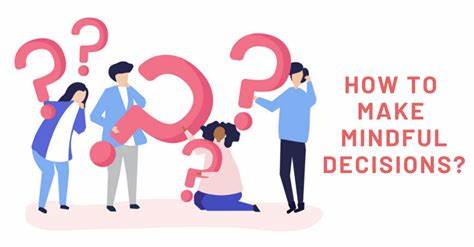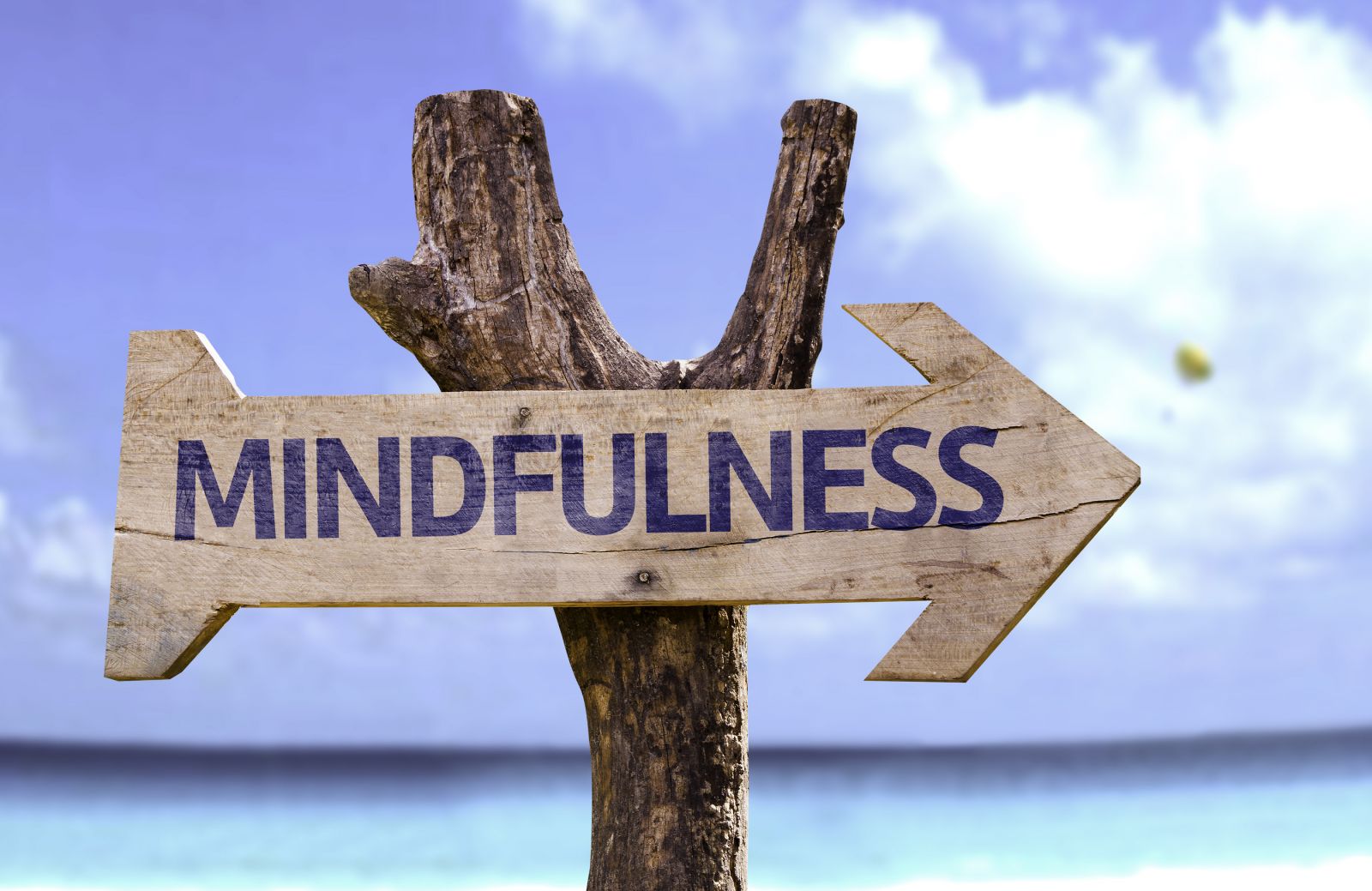Every day, we make hundreds of decisions — what to eat, what to say, how to spend our time. Some decisions are small and routine, while others shape our future. But how often do we stop and truly think about our choices? Mindful decision-making is the art of making thoughtful, intentional choices instead of reacting impulsively. It helps us make better decisions not just for ourselves, but for the people around us too.
In this blog, we’ll explore the right way to make mindful decisions, why it matters, and how to build this habit in daily life. Whether you’re a student, parent, employee, or retired, these techniques are useful for all.

What Is Mindful Decision-Making?
Mindful decision-making is the practice of slowing down to become fully aware of your thoughts, emotions, and surroundings before making a choice. Unlike automatic decisions made out of habit or stress, mindful decisions involve reflection, clarity, and alignment with your values.
In simple terms, it means thinking before acting — not just thinking fast, but thinking deeply and clearly.
Mindfulness itself comes from ancient meditation traditions, especially Buddhism, but today it is widely used in modern psychology and self-development. Researchers like Jon Kabat-Zinn brought mindfulness into mainstream medical and psychological practices, especially through his Mindfulness-Based Stress Reduction (MBSR) program (Kabat-Zinn, 1994).
Why Is Mindfulness Important in Decision-Making?
We live in a fast-paced world. From constant phone notifications to work deadlines, we’re pressured to act quickly. However, decisions made in haste are often influenced by stress, fear, or desire — not logic or purpose.
Practicing mindfulness allows us to:
- Reduce impulsive reactions: Mindfulness creates a mental pause between stimulus and response.
- Gain emotional clarity: Being aware of our emotions prevents them from controlling our actions.
- Align choices with long-term goals: We’re more likely to make decisions that support our deeper values.
- Improve relationships: Mindful choices reduce conflicts and misunderstandings.
A study published in Frontiers in Psychology (2015) found that people who practiced mindfulness had better self-control and decision-making skills, even under pressure.
Step-by-Step Guide to Making Mindful Decisions
Let’s break down how you can make mindful decisions in daily life. The following steps are simple yet powerful:
1. Pause and Breathe
Before making a decision, take a moment to pause. Breathe deeply and bring your focus to the present. This helps you shift from automatic mode to awareness mode.
Even just three deep breaths can help calm your mind and give you space to think clearly. This is especially helpful in emotional or stressful situations.
2. Notice Your Emotions
Ask yourself: What am I feeling right now? Emotions like anger, fear, or excitement can cloud judgment. Acknowledge your feelings without judgment.
For example, if you’re angry, recognize it: “I’m feeling angry, and that might be affecting how I see this situation.” That awareness reduces the emotion’s control over your decision.
3. Assess the Situation Objectively
Try to look at the situation from a neutral perspective. What are the facts? What options are available? What are the consequences of each choice?
This step is about gathering information and separating it from emotional reactions. It helps you see the bigger picture.
4. Reflect on Your Values
A mindful decision is one that aligns with your core values — such as honesty, compassion, responsibility, or health.
Ask yourself: Does this choice support the kind of person I want to be? This helps you stay true to your principles even when faced with difficult choices.
5. Consider Long-Term Impact
Mindfulness helps us think beyond immediate rewards. Before acting, ask: How will this decision affect me and others in the future?
Short-term pleasure often leads to long-term regret, while thoughtful choices can build a better future. This is especially important in financial, career, and relationship decisions.
6. Decide and Let Go
Once you’ve reflected mindfully, make your decision with confidence. Accept that no decision is perfect, and let go of the fear of making mistakes. Mindfulness is about learning and growing, not being flawless.
Everyday Examples of Mindful Decisions
To make this idea more practical, let’s look at a few real-life examples:
- At work: Instead of replying to a stressful email with anger, take a breath, understand your emotions, and respond calmly.
- With money: Before buying something, pause and ask: Do I need this? Will I regret it later?
- In relationships: During arguments, pause to reflect before saying hurtful things. Mindful listening can prevent damage to bonds.
- As a student: When choosing how to study or manage time, reflect on what truly helps your learning instead of cramming mindlessly.
Mindfulness and Decision Fatigue
An often-overlooked part of decision-making is decision fatigue. Our ability to make good choices declines after making too many decisions in a day. This is why many people make poor decisions in the evening — we simply run out of mental energy.
Mindfulness combats this by helping us stay present and recharge. Practices like meditation, journaling, or even mindful walks can help clear the mind and restore decision-making power.
Psychologist Roy Baumeister, who studied willpower and decision fatigue, suggests simplifying routines and reducing unimportant decisions to preserve mental energy for what matters most.
The Role of Meditation in Strengthening Mindful Thinking
Regular meditation strengthens the brain areas linked to attention, emotion control, and decision-making. Studies using brain scans show that people who meditate regularly have better prefrontal cortex activity — the area responsible for planning and reasoning.
Even 10 minutes a day can make a difference. Apps like Headspace or Insight Timer offer guided meditations that anyone can follow, regardless of age or experience.
Teaching Mindful Decisions to Children and Teens
Children also benefit from learning how to make mindful decisions. Teaching them to pause, reflect on feelings, and think before acting can build emotional intelligence early in life.
Simple activities like asking them to describe their emotions, or role-playing situations with choices, can build this habit gently. Schools worldwide are now including mindfulness in their programs because of its benefits in behavior and academic performance (Weare, 2014).
Challenges and How to Overcome Them
Mindful decision-making isn’t always easy. Some common challenges include:
- Time pressure: It feels faster to decide quickly, but fast doesn’t always mean wise.
- Emotional overload: In high-stress moments, our emotions can take over.
- Social pressure: Wanting to please others can lead us to ignore our values.
To overcome these, practice regularly in low-pressure situations. Like any skill, mindfulness improves with time. Over time, you’ll find it easier to stay centered even during storms.
The Right Way to Maintain Healthy Boundaries
Final Thoughts
Mindful decision-making is a powerful life skill. It helps us act with intention rather than reaction, leading to better outcomes in health, relationships, and work. It doesn’t require big changes — just small moments of awareness, reflection, and courage to align actions with values.
Start today. Pause before your next decision, take a deep breath, and ask: What would a mindful choice look like here? That one step can change everything.
References
- Kabat-Zinn, J. (1994). Wherever You Go, There You Are: Mindfulness Meditation in Everyday Life. Hyperion.
- Baumeister, R. F., & Tierney, J. (2011). Willpower: Rediscovering the Greatest Human Strength. Penguin Press.
- Weare, K. (2014). Evidence for Mindfulness: Impacts on the Wellbeing and Performance of School Staff. Mindfulness in Schools Project.
- Karelaia, N., & Reb, J. (2015). “Improving decision making through mindfulness”. Mindfulness, 6(2), 256–273. https://doi.org/10.1007/s12671-013-0258-0
- Frontiers in Psychology (2015). “Trait Mindfulness Predicts Self-Control and Emotion Regulation.” https://www.frontiersin.org/articles/10.3389/fpsyg.2015.01692/full

